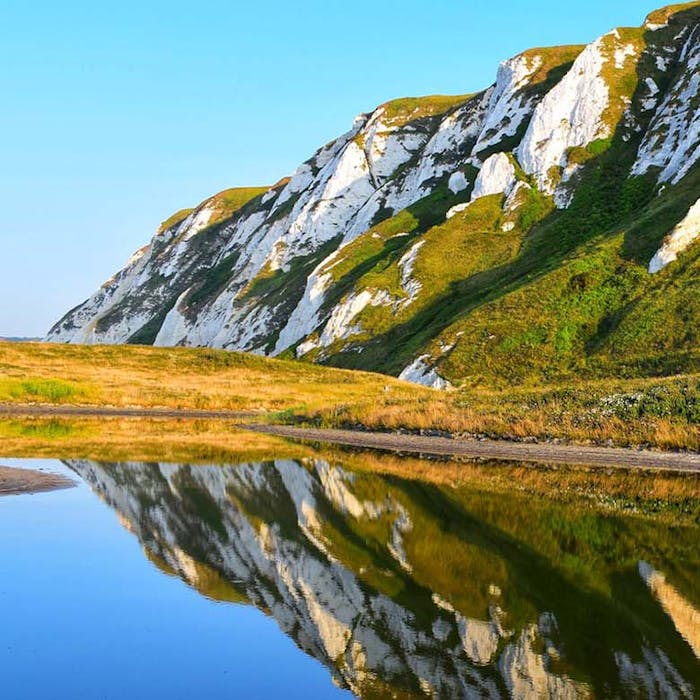
Samphire Hoe - man-made natural delight by the White Cliffs of Dover
Samphire Hoe is an unusual man-made natural environment on the Kent coast, created with 4.9 million cubic metres of chalk excavated during the construction of the Channel Tunnel in the 1980's. It lies at the foot of a section of the White Cliffs of Dover near Folkestone, and it has developed a unique and intriguing ecology .
The cliffs above the current park (Round Down Cliff) were blown up with gunpowder in 1843 to aid the creation of the Dover to Folkestone railway. In 1880 an attempt was made from the site to create a tunnel that would pass under the English Channel, but it failed shortly afterwards. In 1895 a coal mine was sunk there but this closed in 1921 after being very unsuccessful. These activities were served by Shakespeare Cliff Halt railway station at the western end of the Shakespeare Cliff tunnel; the remains of the platforms can be seen from the road to the car park.
In the 1980s, the site was selected as the most suitable (of 60) in which to dump chalk from Channel Tunnel excavations. Work began in 1988, and the first task was to build walls in the sea to create an artificial lagoon, because the park needed to be reclaimed from the sea. The Tunnel opened in 1994, and Samphire Hoe opened to the public in 1997.
It was named after the wild plant rock samphire that was once collected from the Dover cliffs; its fleshy green leaves were picked in May and pickled in barrels of brine and sent to London, where it was served as a dish to accompany meat. A 'hoe' is a piece of land which sticks out into the sea. The name was coined by Mrs Gillian Janaway, a retired primary school teacher from Dover, by way of a public competition.
The ecology of Samphire Hoe includes wildflowers and birds. It is now a chalk meadow-land with a number of nationally rare plant species including the early spider orchid. In July each year, the rock sea lavender blooms, along with rock samphire. Peregrine falcons have been seen flying along the cliffs. Some stonechats and meadow pipits gather on the meadow, while rock pipits move along the base of the cliffs. House martins make mud nests under the overhangs of the chalk cliffs.
The park now attracts around 110,000 visitors per year. Walking, cycling, angling on the sea wall and bird watching are some popular activities available there. The site has a walking trail and serves as a wildlife area. Samphire Hoe has been managed by the White Cliffs Countryside Project, in partnership with the owner, Getlink.
Further reading
Links to external websites are not maintained by Bite Sized Britain. They are provided to give users access to additional information. Bite Sized Britain is not responsible for the content of these external websites.
